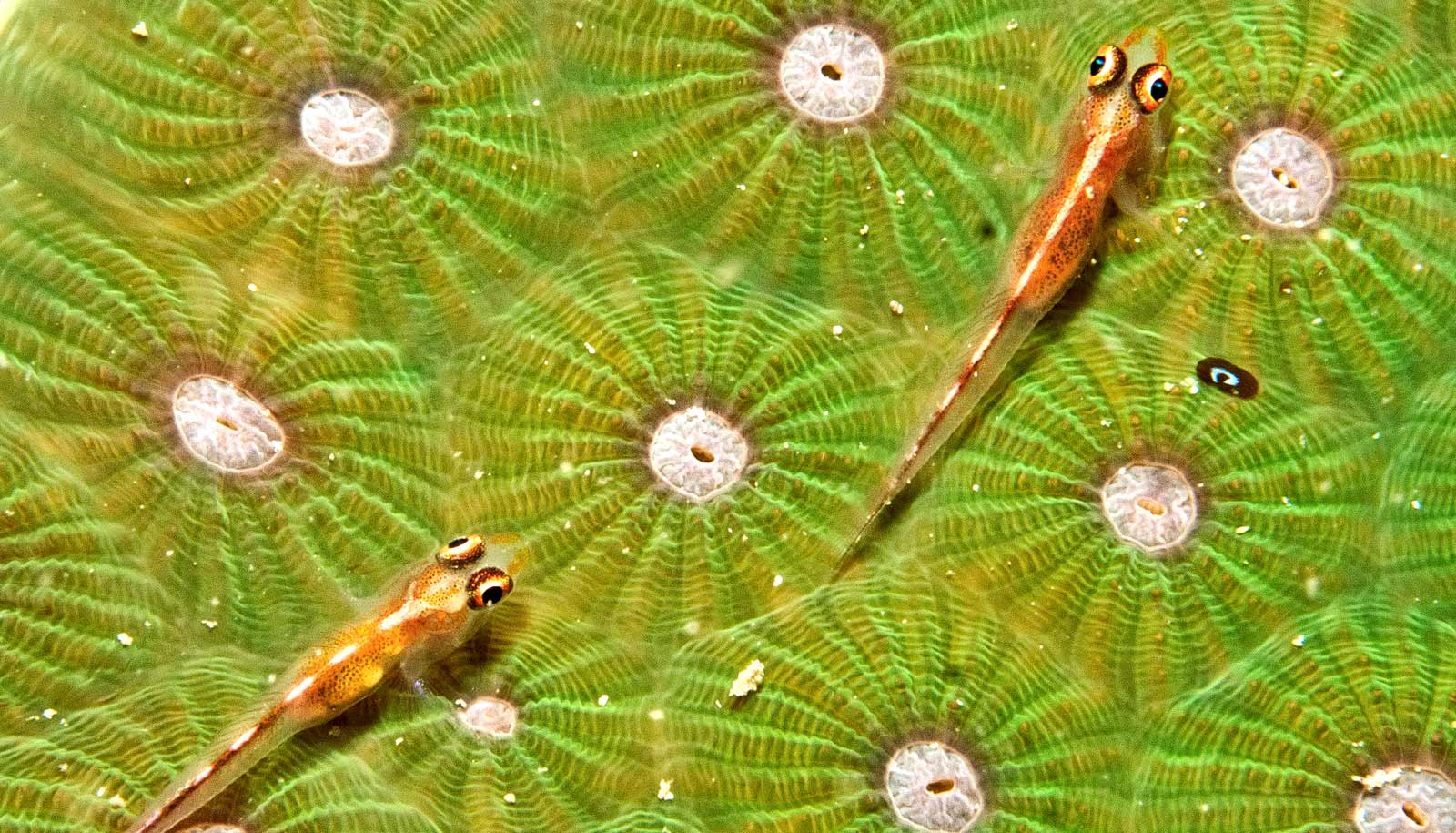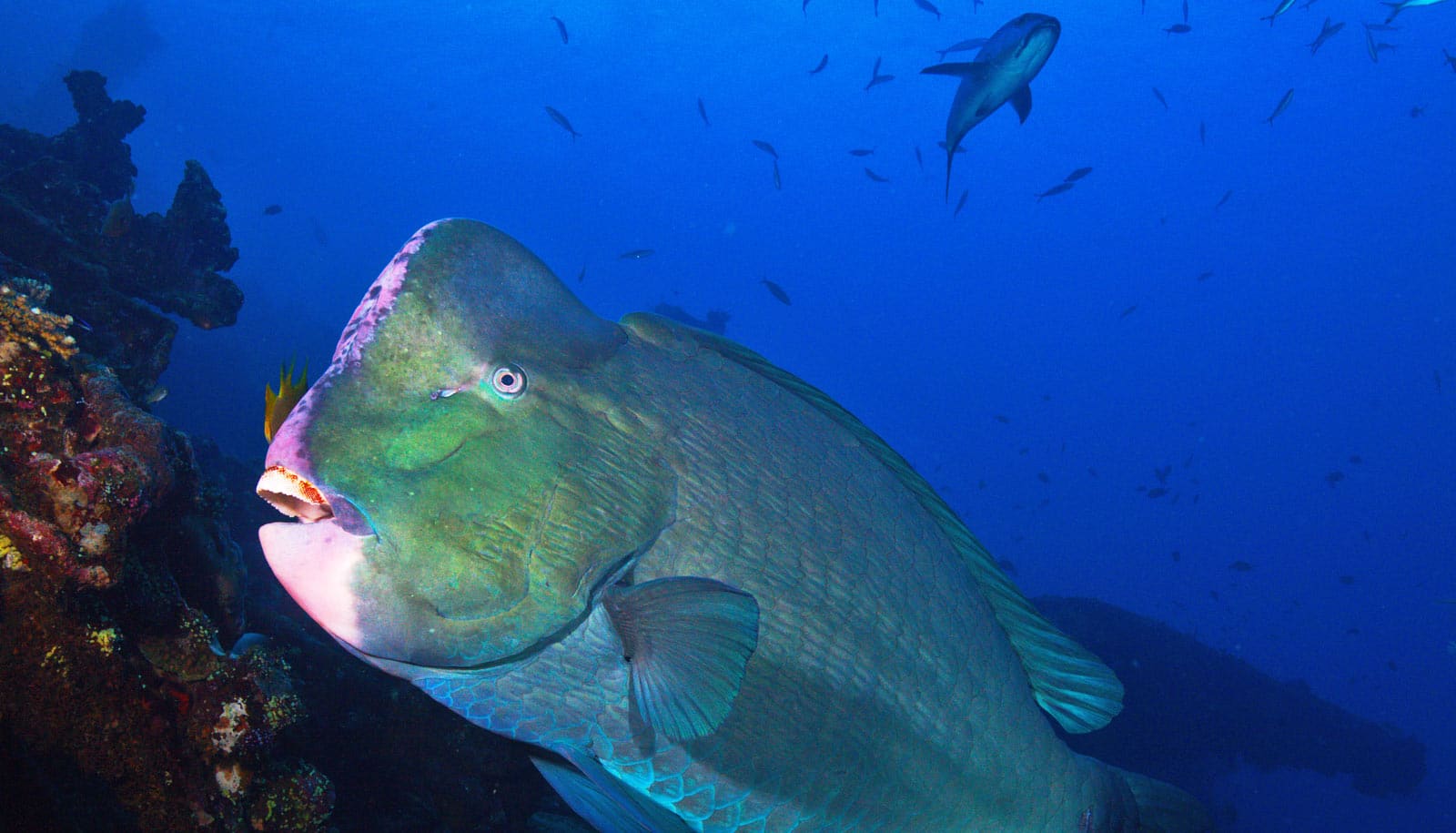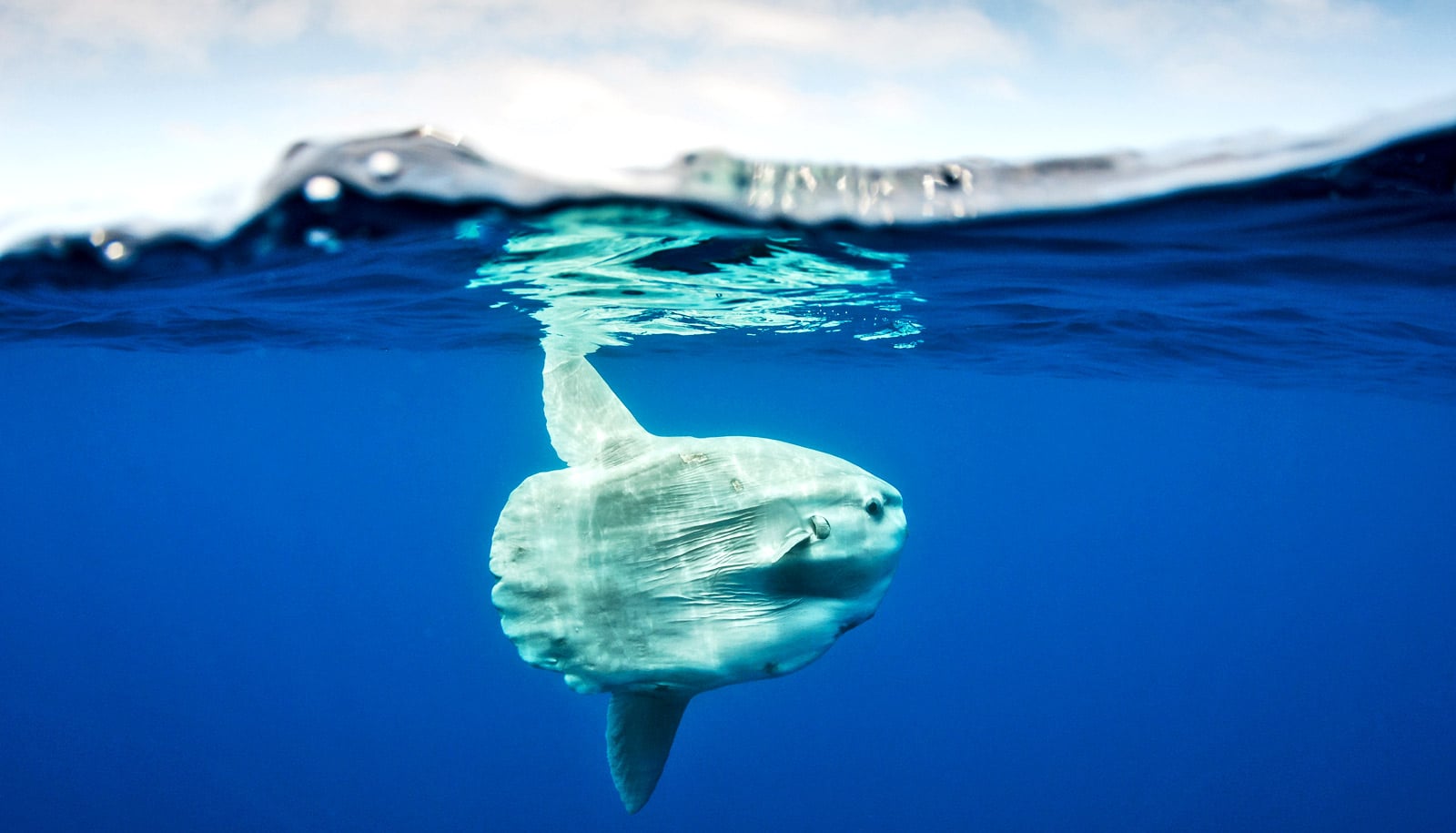Fish on coral reefs can thank an unlikely source for their abundance: tiny bottom-dwelling fish no more than three centimeters long.
A new study shows that these small vertebrates perform a critical function on coral reefs that permit large reef fish to flourish.
“These fish are like candy,” says lead author Simon Brandl, a Banting postdoctoral research fellow at Simon Fraser University in British Columbia. “They are tiny, colorful bundles of energy that get eaten almost immediately by any coral reef organism that can bite, grab, or slurp them up.”
In fact, bigger fish eat the vast majority of tiny fish on reefs within the first few weeks of their existence.
“We were all truly excited to see how entire reef communities were being fueled by some of the smallest vertebrates on earth—including some species that live for an average of just 65 days,” says coauthor Luke Tornabene, an assistant professor at the University of Washington School of Aquatic and Fishery Sciences and curator of fishes at the Burke Museum of Natural History and Culture.
So how come these fishes aren’t disappearing from reefs? An examination of the larvae of reef fishes, which normally undertake epic journeys across the open ocean to find a home, solved the mystery, researchers say. Few of them survive.
But the tiny, bottom-dwelling fish avoid this migration altogether. Most of the larvae appear to simply stay close to home.
“…these miniature fishes are more than just a conveyer belt of nutrients.”
“Tiny fish larvae absolutely dominate the larval communities near reefs,” Brandl says. “Our data shows that these fish get a lot more bang for their buck with every egg they spawn, probably because they avoid the death trap of the open ocean.”
This, in turn, supplies adult tiny fish populations with a steady stream of babies that rapidly replace each adult that eaten on the reef. In total, these fish represent almost 60 percent of all fish tissue consumed on reefs.
The researchers expect this pattern is occurring on coral reefs around the world. Additionally, because these small fish likely spend the entirety of their short lives on a specific reef, they offer a good indication of how healthy a reef environment is, Tornabene says. If the habitat starts to degrade, the fish populations will also take an almost immediate hit.
“In many ways, these miniature fishes are more than just a conveyer belt of nutrients,” Tornabene says. “If we keep a watchful eye on these tiny communities, they may serve as sentinels of the reef, warning us of big impending changes in the entire ecosystem.”
The BNP Paribas Foundation, the National Agency for Research (France), the Smithsonian Institution, the National Science and Engineering Research Council of Canada, and the Australian Research Council funded the work, which appears in Science.
Source: University of Washington



